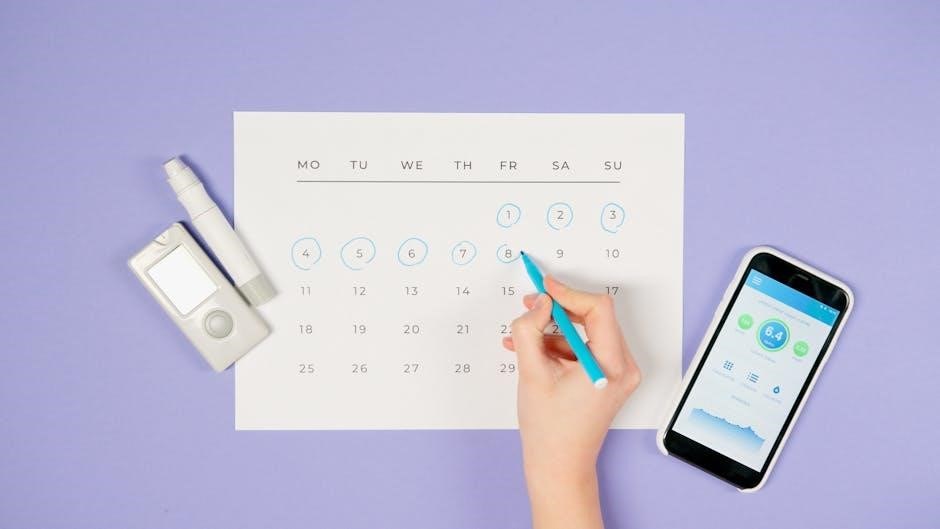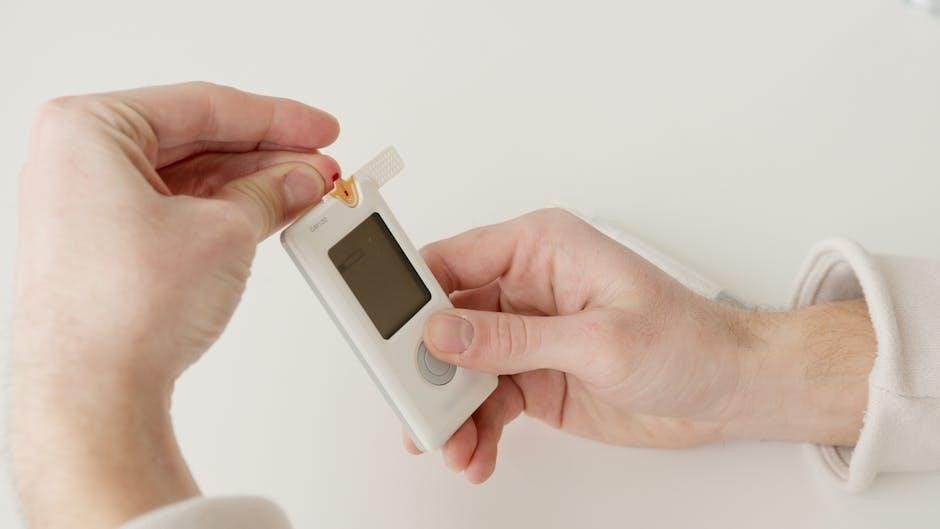
care touch blood pressure monitor user manual
Care Touch Blood Pressure Monitor User Manual: A Comprehensive Guide
Welcome to your comprehensive guide for understanding and using your Care Touch Blood Pressure Monitor. This manual will provide detailed instructions, care tips, and troubleshooting advice. Ensure accurate readings and long-lasting performance with this essential resource.
Care Touch Blood Pressure Monitors are designed for convenient and accurate blood pressure monitoring at home. These monitors employ oscillometric methods to provide reliable systolic and diastolic readings, along with pulse rate measurements. Many models feature result storage, allowing users to track their blood pressure trends over time. With user-friendly interfaces and clear displays, Care Touch monitors aim to empower individuals to proactively manage their cardiovascular health. This guide will help you understand the functionality, proper usage, and maintenance of your Care Touch Blood Pressure Monitor, ensuring you get the most accurate and consistent readings possible.

Overview of Care Touch Blood Pressure Monitor Models
Care Touch offers a range of blood pressure monitors, each designed to meet specific needs. From wrist models to arm models, understanding the differences is key to selecting the right monitor for you.
Platinum Series Features and Benefits
The Care Touch Platinum Series blood pressure monitors boast advanced features for convenient and accurate readings. With a backlight, wide display, users can clearly see their results. Clinically accurate results can be obtained in under one minute, thanks to the smart BP cuff. Irregular heartbeat indicators will also inform you. The included carrying case and batteries enhance portability and usability. Its new and improved features help you monitor your vitals conveniently. The monitor also offers memory storage.
Wrist vs. Arm Monitors: A Comparison
When choosing a Care Touch blood pressure monitor, consider the differences between wrist and arm models. Wrist monitors are compact and portable, ideal for on-the-go use. Arm monitors, however, typically offer more consistent and accurate readings due to their positioning at heart level. Wrist monitors require precise positioning, while arm monitors provide better support. Ultimately, the best choice depends on individual needs, comfort, and desired accuracy. Each has unique advantages, so consider lifestyle and health requirements before deciding.
Setting Up Your Care Touch Monitor
Get your Care Touch monitor ready for use! This section guides you through initial setup, including battery insertion, date and time setting, and creating user profiles for personalized tracking.
Inserting Batteries and Initial Setup
Before using your Care Touch blood pressure monitor, ensure proper battery installation. Typically, this involves opening the battery compartment, inserting the correct type and number of batteries (usually AAA), and ensuring correct polarity (+/-). Refer to the diagram inside the compartment or the user manual for guidance. Once batteries are installed, the monitor will power on. Perform a quick check to confirm the display lights up. Next, proceed with the initial setup, which may involve setting the date, time, and user profile. This will allow for accurate tracking of your blood pressure readings over time. Correct initial setup ensures accurate readings.
Setting Date, Time, and User Profiles
To ensure accurate record-keeping, it’s crucial to set the date and time on your Care Touch blood pressure monitor. Typically, you’ll navigate through the settings using the “Set” or “Memory” buttons, adjusting values with the “+” or “-” buttons. Follow the on-screen prompts or consult the user manual for specific instructions. Many Care Touch monitors also allow you to create multiple user profiles. This is particularly useful if several individuals will be using the same device. Each user can store their readings separately, making it easy to track individual progress over time. Properly configured user profiles enhance data management and personalization.
Taking Accurate Measurements
Achieving reliable blood pressure readings requires proper technique. This section will detail correct positioning, cuff placement, and other factors influencing accuracy. Follow these guidelines for consistent and trustworthy results.
Proper Positioning for Wrist and Arm Monitors
For accurate readings with arm monitors, sit upright with your back supported, feet flat on the floor, and your arm resting on a table at heart level. Ensure the cuff is snug but not too tight. For wrist monitors, support your wrist at heart level during measurement, avoiding any muscle tension.
Regardless of the monitor type, remain still and quiet during the reading. Avoid talking or moving, as this can affect the results. Consistency in positioning will contribute to more reliable and comparable blood pressure measurements over time. Refer to the manual for specific model instructions.
Understanding Systolic and Diastolic Readings
Systolic pressure, the higher number, represents the pressure in your arteries when your heart beats. Diastolic pressure, the lower number, indicates the pressure when your heart rests between beats. Both readings are crucial for assessing overall cardiovascular health. Normal blood pressure is typically considered below 120/80 mmHg, but this can vary depending on individual factors.
Elevated readings may indicate hypertension, while consistently low readings could signal hypotension. Consult your healthcare provider to interpret your readings in the context of your overall health profile and to determine appropriate management strategies. Regular monitoring and understanding of these numbers are essential.
Understanding the Display and Indicators
The display provides key information like systolic, diastolic, and pulse rate. Familiarize yourself with the icons and indicators, such as those for irregular heartbeats or error messages, to accurately interpret your readings.
Interpreting Irregular Heartbeat Indicators
Your Care Touch monitor may feature an Irregular Heartbeat (IHB) indicator. This symbol appears if an irregular heartbeat is detected during measurement. It doesn’t necessarily indicate a serious problem, but frequent occurrences warrant a doctor’s consultation. Factors like movement or talking can trigger the IHB indicator, so ensure stillness during measurements.
If the IHB symbol appears often, discuss it with your physician. They can evaluate your heart rhythm and determine if further testing is needed. Remember, the monitor is a tool for tracking trends, not diagnosing conditions. Professional medical advice is always crucial for interpreting health data.
Understanding Error Messages
Your Care Touch blood pressure monitor uses error messages to alert you to potential issues during measurements. Common errors include “Err 1,” indicating cuff misplacement or inadequate inflation. “Err 2” or “Err 3” might signal movement during the reading, causing inaccurate results. “Err 5” could point to a sensor malfunction or low battery.
Always consult the user manual for a comprehensive list of error codes and their specific meanings. Restarting the monitor or re-taking the measurement after correcting the issue often resolves these errors. If errors persist, contact Care Touch customer support for assistance. Ensuring proper technique minimizes error occurrences.

Storing and Recalling Readings
Learn how to effectively store your blood pressure readings on your Care Touch monitor. This section guides you through accessing stored data for tracking your health trends over time.
Accessing Memory and Reviewing Past Readings
To effectively manage your health, understanding how to access and review stored readings on your Care Touch Blood Pressure Monitor is crucial. Begin by ensuring the monitor is powered off. Press the “Memory” or “MEM” button to enter memory mode. The monitor will display the most recent reading first. Use the arrow keys to navigate through past readings, viewing systolic, diastolic, and pulse rate data. Take note of the date and time stamps associated with each reading for accurate tracking. This allows you to monitor trends and share information with your healthcare provider.
Deleting Stored Data
Occasionally, you may need to clear the stored data on your Care Touch Blood Pressure Monitor. This is especially useful when transferring the device to a new user, or to simply free up memory. To delete data, first, power off the device. Enter memory mode by pressing and holding the “MEM” button for several seconds until the screen indicates data deletion options. Follow the on-screen prompts, usually involving pressing a specific button (like “SET” or “S”) to confirm the deletion. Be aware that this action typically erases all stored readings permanently. Consult your user manual.

Care and Maintenance
Proper care and maintenance are essential for the longevity and accuracy of your Care Touch Blood Pressure Monitor. Follow these guidelines to ensure reliable performance and prevent damage to your device.
Cleaning and Storage Recommendations
To maintain your Care Touch Blood Pressure Monitor, regular cleaning is crucial. Use a soft, slightly damp cloth to wipe down the device and cuff, avoiding harsh chemicals or excessive moisture. Ensure the monitor is completely dry before storing it. When not in use, store the monitor in a cool, dry place away from direct sunlight and extreme temperatures. Keep it in its protective case or a similar container to prevent dust accumulation and physical damage. Proper storage helps preserve the accuracy and lifespan of your blood pressure monitoring device.
Troubleshooting Common Issues
Encountering issues with your Care Touch Blood Pressure Monitor? First, ensure the batteries are properly inserted and have sufficient power. If the display is blank, replace the batteries. For inaccurate readings, check the cuff placement and ensure it’s snug but not too tight. If error messages appear, consult the user manual for specific solutions. If irregular heartbeat indicators are frequent, consult your doctor. Should problems persist, contact Care Touch customer support or a qualified technician for assistance. Avoid attempting repairs yourself to prevent further damage and maintain warranty validity.

Calibration and Accuracy
Maintaining accuracy is crucial. Learn how to ensure your Care Touch Blood Pressure Monitor provides reliable readings over time. Follow guidelines for calibration checks to maintain optimal performance and health insights.
Ensuring Accurate Readings Over Time
To ensure your Care Touch blood pressure monitor provides consistently accurate readings, regular maintenance and understanding of potential influencing factors are essential. Factors such as body movement, vibrations, and unstable conditions can interfere with readings, leading to inaccuracies. Avoid taking measurements in these conditions. Check the cuff for proper fit and placement, as incorrect positioning affects results. It is also advisable to periodically compare your monitor’s readings with those taken by a healthcare professional using a manual cuff and stethoscope. If significant discrepancies occur, consider recalibrating your device as per the user manual’s instructions, if available. Remember, consistent practices lead to reliable health monitoring.
Where to Find the User Manual
Access your Care Touch Blood Pressure Monitor user manual through the official Care Touch website. Look for a PDF download, ensuring you have the most up-to-date information for your device.
Downloading PDF Versions Online
To easily access your Care Touch Blood Pressure Monitor’s user manual, visit the official Care Touch website. Navigate to the support or downloads section, where you can search for your specific model. Once located, you’ll find a downloadable PDF version of the manual, allowing you to view it on any device. This digital format ensures convenient access to instructions, troubleshooting tips, and important safety information. You can also search online retailer sites such as Walmart or Amazon for links to the PDF manual. Always ensure the PDF is from a reliable source.